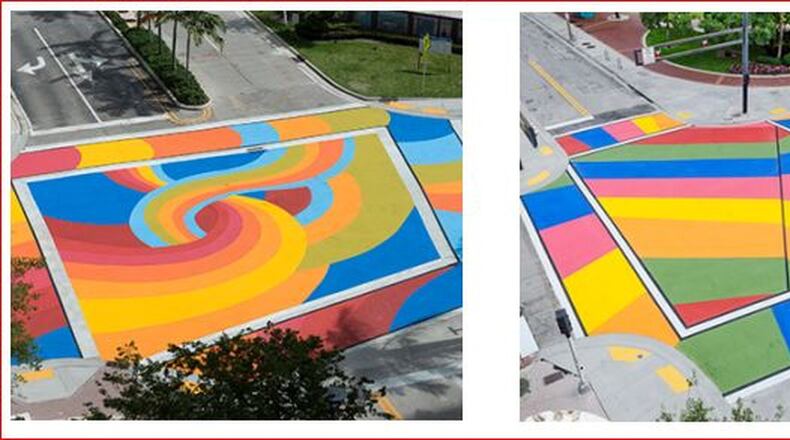“They offered some really good ideas that are immediately actionable for the community,” said Curtis, who as a member of the South East Civic Association’s strategic planning team was part of public discussions with the city that led to a call for the Miami students’ report.
“I think they took a realistic look at our community and what could be some things that could be advantageous to look at. I think the next step is now the neighborhood has to come together and say, ‘What would we like to see?’. They shared some ideas, now let’s open it up to the community, to say, ‘Here’s what they shared. What would be some areas you would like to do?’”
Plans are being developed for community discussions in August or September, fostered by a collaboration of different groups, “so it’s truly community,” she said.
Jerome Bradford, owner of Gentlemen’s Quarters Grooming Lounge on Central Avenue, likes plans to improve properties and revitalize the area
“That’s a beautiful thing,” he said. “I just hope and pray that it really helps to build up morale in the Second Ward and make things beautified so that ultimately, we grow as a community.”
The 35-page “Second Ward Revitalization Strategy” was created by 11 planning students.
The students suggested quick and relatively inexpensive ways to make the neighborhood brighter and more dynamic. Among those were very colorful crosswalks or even entire intersections and their crosswalks marked by dramatic, painted designs. Other ideas included using vacant city-owned properties to create temporary gathering places where food trucks might have attractive places for customers.
Small performance areas and mini amphitheaters were another suggestion, along with attractive arches announcing people are entering the neighborhood.
Aside from quick ways to add vibrancy to the neighborhood, another intriguing part of the report was a “reimagining” of the Five Point intersection, where Pershing Avenue and Central Avenues connect.
One nearby building might be good for a drugstore, while another might be good for a restaurant with outdoor seating, and yet another could be good for small-scale retail, the students suggested.
Those could be good ideas for the community, and property owners, to take from there, Curtis said.
The Second Ward neighborhood, located east of the Great Miami River between Hamilton’s downtown and Miami University’s campus in the city, is one of many parts of the city hoping to benefit from the proposed gigantic Spooky Nook at Champion Mill sports complex and convention center now under construction several blocks to the north and across the river.
Neighborhood advocates in late 2018 called on city leaders to help ensure that the impoverished area of the city can experience development spillover from Spooky Nook, which is expected to attract athletes and their families from a several-hour drive on many weekends. That is expected to drive a need for more area restaurants, hotels and other temporary lodging for the visitors.
“Safe, Clean and Beautiful is the tagline that I’m looking at for our community, and they provided some really good ideas that could deal with being clean, providing an aesthetic for the community to really get behind, and then some really good ideas for what could we do to bring the community together?” she said.
She liked the idea of art to uplift the community and make it more vibrant.
“That’s a good word that we’re looking at — the word of ‘vibrancy’ — when you’re looking at revitalization, vibrancy has to be a part of it,” Curtis said.
Brightening the Second Ward
The “Second Ward Revitalization Strategy” offers several ideas to add vibrancy to Hamilton’s Second Ward neighborhood. Among them:
- Rather than crosswalks with the usual white stripes, why not using several colors and shapes for the crosswalks?
- Even more dramatic, what about coloring in the entire intersection in addition to the crosswalks, with patterns that make motorists and pedestrians alike take notice?
- Entry arches or signs that announce that people are coming into the neighborhood also could help.
- Performance spaces, such as a small amphitheater or "temporary gathering space" where food trucks can visit, are another option.
- Other ways to brighten the neighborhood include other things that have been done in Hamilton: Large, eye-catching murals, and also outdoor sculptures.
About the Author




